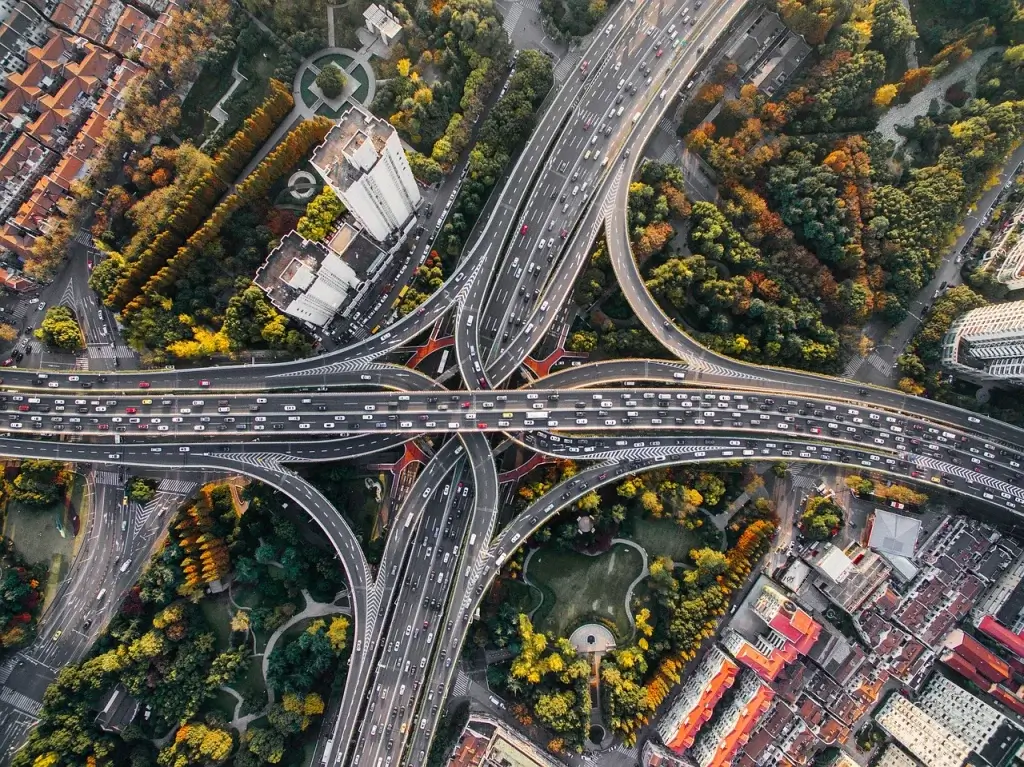How Brazil Can Strengthen its Infrastructure to Combat the Climate Crisis

Dr. Edivando Vitor do Couto

To comprehend the gravity and urgency of the climate crisis, it is essential to distinguish between the terms “climate crisis” and “climate change.” Climate change refers to long-term alterations in the Earth’s climate patterns, including variations in temperature, precipitation, and other meteorological phenomena over decades or centuries. This process is natural and has occurred throughout the planet’s history. However, since the onset of the Industrial Revolution, human activities, particularly the burning of fossil fuels and deforestation, have drastically accelerated these changes, leading to unprecedented global warming.
The climate crisis, on the other hand, underscores the urgency and severity of the impacts of these accelerated changes. It represents a critical and emergency situation where climatic alterations are causing significant and immediate damage to the environment, the economy, and society. The term “crisis” emphasizes the need for immediate action to mitigate the effects and adapt our infrastructures and lifestyles to a new climatic reality.
The climate crisis presents an unprecedented and urgent challenge, especially concerning our rural and urban infrastructure. It is not merely about adapting physical structures but involves a revolution in how we conceive, construct, and maintain our essential systems. The reality imposed by the climate crisis demands immediate and effective measures to create resilient infrastructure prepared to face an uncertain future filled with climatic extremes.
Impacts of the Climate Crisis on Infrastructure
It is crucial to understand the tangible impacts of the climate crisis on infrastructure. Extreme weather events are becoming more frequent and intense. Devastating hurricanes, catastrophic floods, prolonged droughts, unbearable heatwaves, and intense snowstorms are no longer exceptions but the new norm. These phenomena destroy roads, bridges, power grids, and water supply systems, exposing the fragility of our infrastructures.
Even in Munich, the capital of Bavaria, one of the wealthiest states in Germany, they are unprepared for the effects of climate change. Last winter, the entire state experienced over a week of isolation in its transport systems. Extreme weather conditions, described by some residents as unprecedented in their lifetimes, highlighted Germany’s lack of preparedness for the effects of climate change. With up to 40 centimeters of snow accumulated over several days, the hazardous conditions overwhelmed local infrastructure. DW reporter William Glucroft, among those stranded, reported the challenges of navigating untreated icy roads and overcrowded train stations. Although transport services are gradually returning to normal, ongoing delays and persistent icy conditions underscore the urgent need for Germany to improve its preparedness for increasingly severe weather patterns associated with climate change.
Additionally, rising sea levels directly threaten densely populated coastal areas, home to major cities, ports, and maritime infrastructure. Sea invasion in urban and rural areas causes irreversible damage, requiring immediate and effective solutions.
Changes in climate patterns also affect water availability, energy production, and transportation. Alterations in precipitation, temperature, and wind patterns have direct consequences on the operation and maintenance of these vital systems, necessitating constant and adaptive reassessment of employed strategies.
Visible Impacts in Rio Grande do Sul
Rio Grande do Sul, one of Brazil’s federal units, offers a clear and concerning example of the climate crisis’s impacts at a regional level. The state’s climatic diversity, including both coastal areas and subtropical regions, makes it particularly vulnerable to a range of extreme weather events. Here, we observe how the climate crisis is causing profound changes and how local infrastructure must urgently adapt.
Since April, Rio Grande do Sul has been devastated by intense rains, resulting in historic floods that have forced half a million people to abandon their homes. Scientists warn that it could take a month for the floods to subside. In some regions, river waters remain above dangerous levels, exacerbating challenges for local communities.
Adapting Infrastructure
Building resilient infrastructure is an imperative necessity. New constructions must be designed to withstand extreme weather events, using more durable materials and innovative designs that consider climatic risks. Studies show that infrastructure resilience is crucial to ensuring the continuity of essential services during severe climatic events, especially in densely populated coastal and urban areas.
Scientists highlight three essential pillars for infrastructure: Resilient Designs, Early Warning Systems, and Nature-Based Solutions.
Innovative infrastructure projects need to incorporate the capacity to anticipate, absorb, adapt, and quickly recover from extreme weather events. This involves using robust materials, redundancy, and modularity in systems, factors that can reduce vulnerability and increase overall resilience. It is not enough to build for today; it is imperative to design for an unpredictable tomorrow, where robustness and flexibility go hand in hand.
Early warning systems are indispensable. Implementing advanced technologies to predict and alert about imminent weather events allows precautionary measures to be adopted timely, minimizing damage and saving lives. The resilience of transport and energy networks, for example, can be significantly enhanced with the integration of proactive alert and mitigation systems. In an era where information is power, being able to act before disaster strikes is crucial.
Nature-based solutions must be integrated into infrastructure protection strategies. Using forests, wetlands, and other natural solutions offers effective defense against climatic impacts, along with additional environmental benefits. These solutions not only mitigate the immediate effects of weather events but also contribute to biodiversity and long-term sustainability.
Opportunities for Brazil
In light of this, Brazil finds a vast array of business and investment opportunities in adapting to climate change. This transition is not only necessary but can also be extremely profitable. Let’s explore some concrete possibilities and how the country can advance in this scenario.
Firstly, renewable energy is not just a global trend but an urgent necessity. Brazil, with its vast natural resources, has a glaring comparative advantage. Investing in solar and wind energy is like discovering an open-pit gold mine. Imagine solar parks in the Northeast and wind farms in the South, all generating clean energy and, more importantly, money.
For this, we need incentive policies that are more than just beautiful words in campaign speeches. Subsidies, tax credits, and an efficient transmission infrastructure are the way forward. Connecting high energy generation areas to consumer centers should be an absolute priority.
In the countryside, sustainable agriculture is the inevitable path to a prosperous and green future. Modern agricultural technology can be a game-changer, transforming archaic practices into innovative solutions. Drought-resistant seeds and precision farming techniques are within our reach, ready to revolutionize the sector.
Why not integrate trees and agricultural crops? Agroforestry not only improves soil quality and increases productivity but also plays a crucial role in carbon capture. This practice is not just a win-win but a win-win-win, where productivity, environmental quality, and climate change mitigation go hand in hand.
Regenerative agriculture goes further, replenishing and improving natural resources rather than merely using them. This approach not only enhances biodiversity and soil health but also excels in generating carbon credits. Through practices like crop rotation, soil cover, and holistic pasture management, farmers can sequester large amounts of CO2 from the atmosphere, transforming the agricultural sector into an ally against climate change.
The generated carbon credits can be traded, creating a new income source for farmers. This expanding market offers a lucrative and sustainable opportunity for Brazilian agribusiness. Moreover, by adopting regenerative practices, farmers improve their land’s resilience against extreme weather events, ensuring more stable and sustainable production in the long term.
Transitioning from conventional agriculture, often dependent on chemical fertilizers and monocultures, to sustainable and modern agriculture that sequesters carbon is not only necessary but strategic. This new paradigm involves a mindset shift where sustainability and innovation are seen as essential factors for productivity and profitability.
Investment in research and development (R&D) is crucial to drive this change. New agricultural technologies must be developed and adapted to Brazil’s specific conditions, promoting practices that conserve natural resources and increase efficiency. Research institutions, universities, and the private sector must work together to create innovative and accessible solutions for all farmers.
Sustainable construction should be the new norm. Using eco-friendly materials and techniques that reduce energy and water consumption is not only feasible but essential. Urban redevelopment projects that integrate nature-based solutions, such as green roofs and urban parks, are not a luxury—they are a necessity.
Implementing standards that encourage sustainable construction is fundamental. Public-private partnerships can accelerate this process. The city of the future cannot be planned with solutions from the past.
Water is the planet’s most precious resource. Technologies for desalination and water reuse are golden opportunities. Expanding and modernizing basic sanitation networks are also crucial. Here, investment in research and development is again essential. We can no longer rely on archaic and inefficient systems.
Finally, but not least, early warning systems and monitoring technologies are vital. Developing and implementing advanced climate and natural disaster monitoring systems can save lives and prevent tragedies. The use of drones and satellites to monitor environmental changes should be intensified.
Investing in technological infrastructure and professional training is essential. We must not forget international partnerships. Sharing technology and knowledge is a two-way street that only brings benefits.
Main Challenges
Firstly, there is an alarming deficiency in basic education. The lack of a solid foundation in primary and secondary education prevents our youth from accessing quality technical and higher education courses. This results in low proficiency in essential subjects like mathematics, sciences, and technological skills. It’s the same old story: without a foundation, there’s no peak.
Secondly, there is a disconnect between education and the job market. Many higher education and technical courses are not aligned with current demands, especially in technology and sustainability. The result? An inadequately prepared workforce to face contemporary challenges.
Additionally, we suffer from a lack of investment in research and development (R&D). Without R&D, there is no innovation, and without innovation, we fall behind. Lastly, the lack of continuous training programs prevents professionals from updating their skills throughout their careers.
Inclusion of Climate Change in Higher Education
To overcome these challenges, we need to integrate climate change into all higher education courses in an adapted manner. Interdisciplinary curricula are key. Civil engineers need to study sustainable construction and renewable energy systems, while economists learn about the green economy and carbon markets.
Academic projects and practical internships involving solutions to climate-related problems should be encouraged.
Partnerships with companies and NGOs can provide valuable field experiences. Additionally, creating centers of excellence in universities dedicated to climate solution research and development can serve as innovation hubs.
Creation of Technical and Vocational Courses
Creating specific technical and vocational courses for the green economy is essential. A clear example is the technical course in renewable energies, focused on the installation and maintenance of solar, wind, and biomass systems. This type of training is crucial to meet the growing demand of the clean energy industry.
Another vital area is water resource management. Courses that train in desalination technologies, water reuse, and sustainable watershed management are indispensable. Professionals trained in this area can work in sanitation companies and water conservation projects.
Conclusion
The climate crisis is not a distant threat; it is a reality already causing havoc on our infrastructures and lifestyles. However, recognizing the gravity and urgency of this crisis also allows us to identify numerous opportunities to turn this adversity into a drive for innovation and sustainable growth.
Brazil, with its vast array of natural resources and development potential, can lead this transition. Investing in renewable energy, sustainable agriculture, and resilient infrastructure is not only a matter of survival but a golden opportunity to generate wealth and prosperity sustainably. To achieve this, the country must overcome education and professional training challenges, integrating climate change into all education levels and creating specific technical and vocational courses for the new green economy.
Including climate change in the curricula of all higher education courses and creating continuous training programs are essential steps to forming a workforce capable of facing contemporary challenges. Additionally, developing agricultural technologies and practices that sequester carbon can transform Brazilian agriculture into a highly profitable and sustainable sector.
Future cities should be planned with nature-based solutions and built with eco-friendly and efficient materials. Public-private partnerships can accelerate this process, ensuring that our infrastructures are not only resilient but also harmonious with the environment.
Finally, early warning systems and monitoring technologies are vital for saving lives and preventing tragedies. Investing in technological infrastructure and professional training is essential to ensure Brazil is prepared to face an uncertain future filled with climatic extremes.
The green transition is a golden opportunity for Brazil. With robust public policies, strategic investments, and an integrated vision of sustainable development, the country can not only mitigate the impacts of climate change but also lead a new economic paradigm. The future is green, and it is up to us, Brazilians, to seize this chance and lead by example. It’s time to act.
References
Chatterjee, A., & Layton, A. (2020). Mimicking nature for resilient resource and infrastructure network design. Reliability Engineering & System Safety, 204, 107142.
Panteli, M., & Mancarella, P. (2015). Influence of extreme weather and climate change on the resilience of power systems: Impacts and possible mitigation strategies. Electric Power Systems Research, 127, 259-270.
Shakou, L. M., Wybo, J., Reniers, G., & Boustras, G. (2019). Developing an innovative framework for enhancing the resilience of critical infrastructure to climate change. Safety Science.
Testa, A. C., Furtado, M., & Alipour, A. (2015). Resilience of coastal transportation networks faced with extreme climatic events. Transportation Research Record, 2532, 29-36.
________________________________________________________________________________









